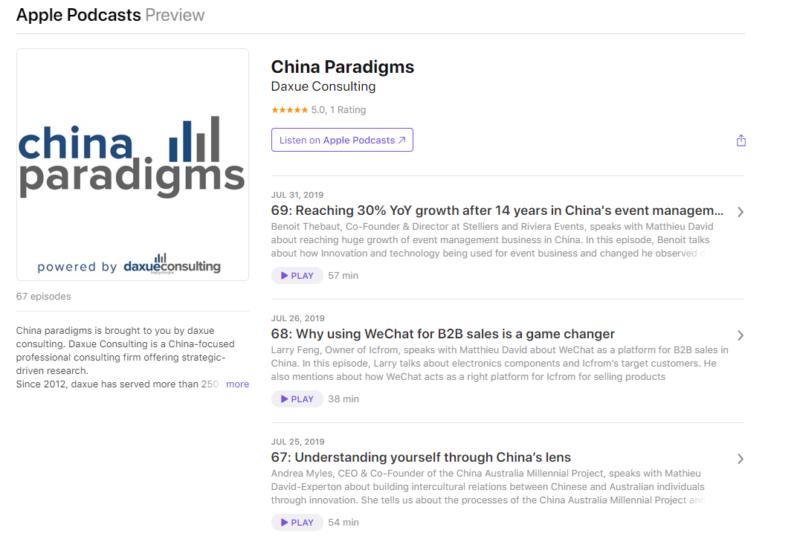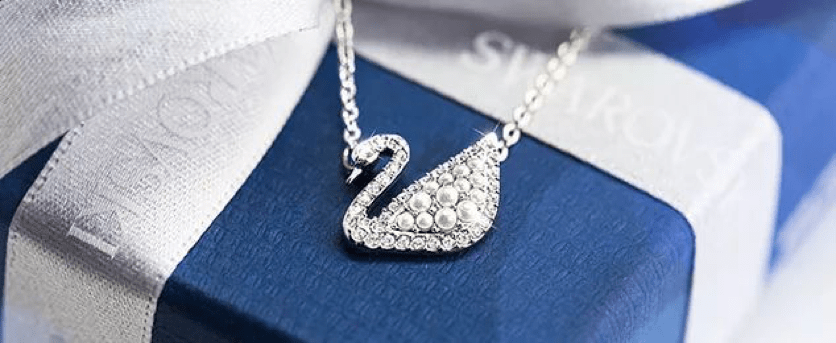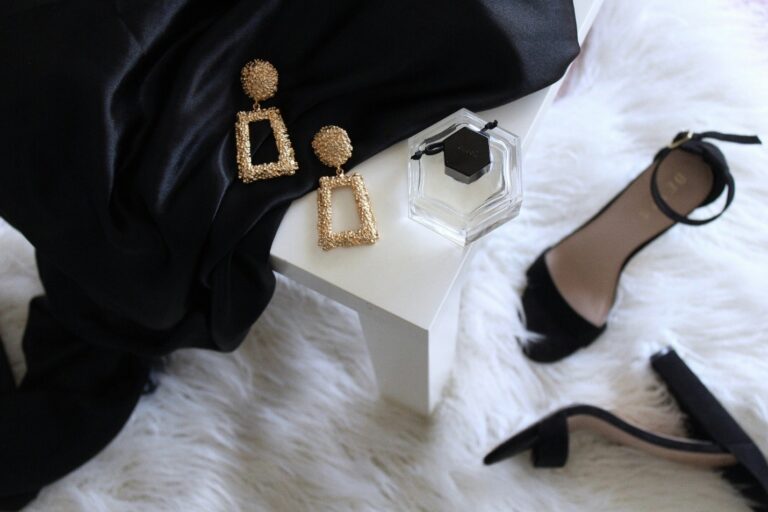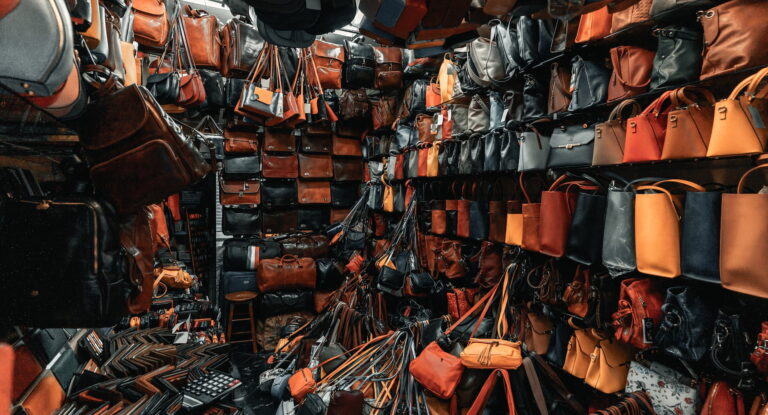As a family-owned business, Swarovski was founded in 1895 by Daniel Swarovski. Today, the Swarovski Crystal Business (producing branded crystal jewelry and accessories) is a leading jewelry brand in China and around the world. It has a global reach of approximately 3,000 stores in around 170 countries, more than 29,000 employees, and a revenue of about 2.7 billion euros (in 2018). We explain the success behind Swarovski in China and analyze its China market strategy.
China has become Swarovski’s Largest Market
In 2016, the annual sales of Swarovski in China reached 1.7 billion Yuan, with a 13% increase from the year before. Since then, China has surpassed the United States to become the biggest market for this Austrian Crystal producer.
Swarovski’s Consumers in China
According to Swarovski’s investigation, Chinese consumers, on average, are ten years younger than consumers in the rest of the world. Specifically, young consumers in China are digital-savvy. They are keen on sharing products and shopping experiences on social media and social network platforms.
Exploiting Business Opportunities in China: Swarovski’s Marketing Strategies
Swarovski has long placed great emphasis on Chinese consumers. According to Swarovski’s CEO Robert Buchbauer, Swarovski has strategically grown and nurtured the Chinese market by focusing on three aspects: quality products, market distribution, and e-commerce.
Using Traditional Chinese Elements in Designs
Swarovski has shown appreciation for the profound history and culture of China. In addition to offering the highest quality glass crystals, Swarovski has devoted to understanding the Chinese culture and consumers’ preferences for the products and designs. In 2019’s Chinese New Year, Swarovski unveiled limited-edition collections for this traditional festival. For instance, red, symbolizing good fortune and joy, is the theme color during the Chinese New Year. With this insight, Swarovski issued the iconic swan bracelet and pendant in a red color, which became quite popular among Chinese consumers.

Source: VOGUE China, Advertising of 2019’s Chinese New Year Red Iconic Swan Collection
In 2019, Swarovski in China started to cooperate with the Palace Museum intensively. Diving deep into the Chinese culture, Swarovski is skilled in mixing fashion with traditional Chinese elements. Furthermore, on Nov 21, 2019, Swarovski signed a cooperation agreement with the China Cultural Heritage Foundation to protect cultural heritage in China. The China Cultural Heritage Foundation initiated the project “Growing Sapling”. The project works to protect, promote, and better the inheritance of intangible cultural heritage in China.
Swarovski’s attempt of New Retail in China
Swarovski is a popular jewelry brand in China. At the end of 2019, Swarovski has almost 400 stores in China. These stores have covered more than 100 cities.
Swarovski’s precise positioning and product segmentation contribute to its popularity in both first-tier cities (e.g., Shanghai, Beijing) and second and third-tier cities without jeopardizing the brand value. For instance, as a high-end line, Swarovski’s Fine Jewelry uses high-end materials with stylish designs while the price of Swarovski’s Fashion Jewelry is more affordable. The Fashion Jewelry collection is fit for every woman for any occasion. As a result, Swarovski has tapped the new opportunities created by the upcoming boom in China’s second- and third-tier cities. Swarovski is trying to raise its brand awareness among Chinese consumers in these cities with a plan in 2020 to cover an additional 30 cities.

Source: ctrip, Traditional Swarovski Store
New retail Crystal Studios
Swarovski has opened two Crystal Studios in Shanghai and Beijing, respectively, in 2019. As an attempt to dip a toe in the realm of new retail in China, Crystal Studio is a dynamic and creative space. The studio offers a memorable, highly interactive, and socially focused environment.
Compared to traditional Swarovski stores, the Crystal Studio is more open and interactive. The heart of the shopping experience in the Crystal Studio is at the Sparkle Bar. It is an immersive jewelry station where consumers can spend time discovering new products, curating looks with styling consultations from Swarovski’s in-store experts, and exploring product ranges virtually. Shoppers are encouraged to touch and try on a range of products by using the variable lighting settings at the Sparkle Bar mirror.
They are also encouraged to explore the digital styling inspiration by themselves. The Crystal Studio is digital, with a warm and enchanting color palette. The Crystal Studio discarded the traditional advertising lightbox. Instead, it uses LED screens to display the latest brand information and the newest product collections. The Crystal Studio also provides digital devices and even has a wireless phone charging area. This way, consumers can easily share their photos and shopping experiences on their social media.
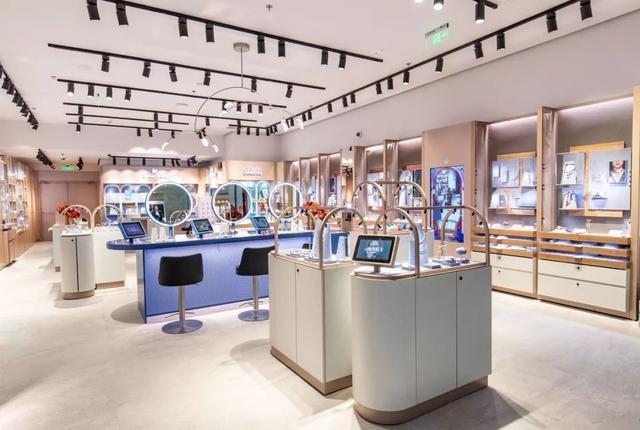
Source: Baidu, Swarovski’s Crystal Studio in Bejing
E-Commerce: How Swarovski in China is Winning over Consumers
Tmall
Among the first wave of western brands taking advantage of the vibrant Chinese e-commerce market, Swarovski opened a flagship store on Tmall in 2015. Today, the flagship store on Tmall has 4.86 million followers. In 2019’s Double 11, the sales of Swarovski ranked No. 4 among jewellery brands on Tmall.
Unfortunately, Swarovski’s flagship on Tmall faces the trouble of counterfeit products. In 2017, Alibaba sued two Tmall merchants for selling fake Swarovski watches on the online platform. Counterfeit products caused the loss of sales as well as damage to the brand reputation. However, Swarovski’s CEO Robert Buchbauer took a supervising perspective in dealing with counterfeit products. He said that consumers who purchased counterfeit products were not the target consumers of the brand. As a result, Swarovski’s expansion in Chinese e-commerce has not been restricted by counterfeit products.
Today, Swarovski in China has set up a presence on JD.com, another key player in e-commerce. It also has its own official website.
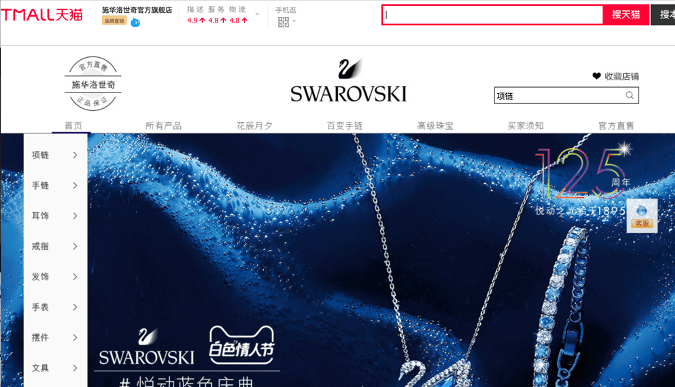
Source: Tmall, Swarovski’s flagship on Tmall
On May 10, 2017, Swarovski launched a mini-program on its WeChat Official account. Consumers can order products, manage their membership status, and look for offline stores by using their WeChat mini program. WeChat store is believed to increase consumer engagement, brand awareness, and purchases (both online and offline).
Besides, Swarovski benefits from WeChat’s interactive campaign. In 2018, Swarovski in China discovered through the success of its Christmas campaign on WeChat. Over the month of December, Swarovski teased an “Advent Calendar” box of products that included three full-price gifts and twenty-one free gifts (sales price: 2,980 Yuan). Every day, consumers visited the mini-program, took part in various kinds of games, and interacted with their friends who also joined the campaign.
The campaign allowed Swarovski’s WeChat official account to generate a significant increase in the number of followers. The sales of the “Advent Calendar” box was also remarkable. It sold out within ten days.

Source: Luxury Society, Swarovski’s 2018 Christmas Campaign on WeChat
Other Social Media and Platforms
Swarovski has official accounts on Weibo, Xiaohongshu, Douyin, and more. Content and recommendations generated by consumers in these platforms have promoted Swarovski’s online and offline sales as well.
In 2019, Swarovski uncovered the Lifelong Bow edition for Valentine’s Day. The Lifelong Bow Y Necklace became quite popular and is highly recommended by key opinion leaders on Xiaohongshu—even has a nickname “fairy’s necklace” (in Chinese: 仙女链). As a result, the necklace was quickly out of stock around the world.

Source: Xiaohongshu, A Trending Post Considering Lifelong Bow Y Necklace on Xiaohongshu
Combination of offline and online marketing
Swarovski in China has found success through a combination of online and offline. O2O strategies in China are increasingly common. This model of new retail is fit for a population with an increasingly high mobile phone adaption. Digital strategies on Tmall and Xiaohongshu bring the brand to consumers all over China, while the experiential stores bring the brand to life.
Let China Paradigm have a positive impact on your business!
Listen to China Paradigm on iTunes
